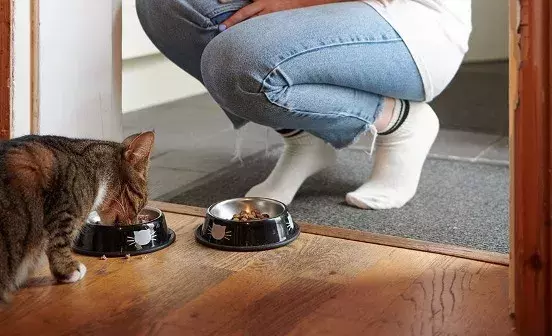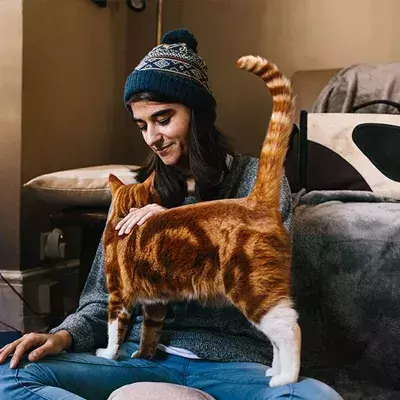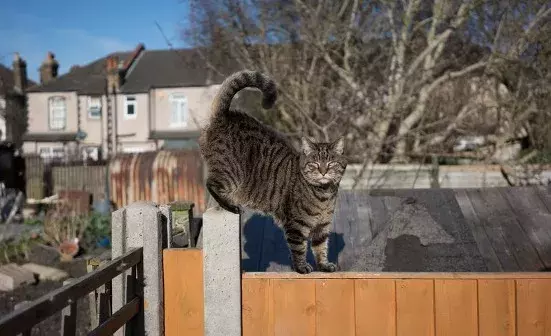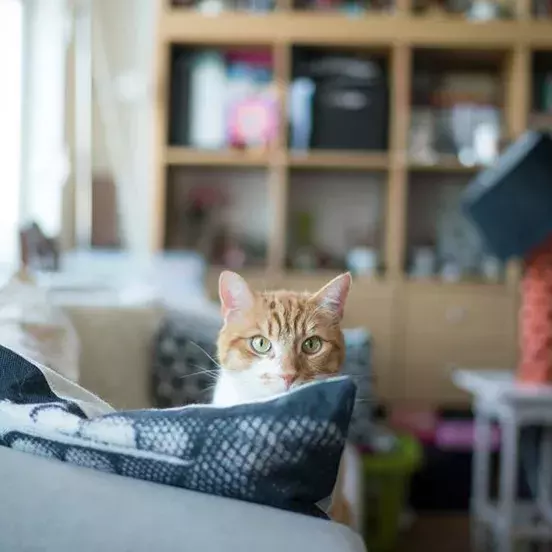Just like a human, a cat can become obese if they take in more calories than they are using up through regular physical exercise.

Most cats naturally try to regulate what they eat, but sometimes if they’re in an environment that doesn’t provide them with enough physical and mental stimulation to allow them to burn it off, they can become obese.
Obesity in cats can contribute to a number of different medical conditions including diabetes mellitus, lower urinary tract disease (i.e. cystitis), arthritis, respiratory issues, and heart problems to name but a few. Obese cats are also often unable to groom themselves as well as they would like. Cats that are overweight or obese may struggle to clean sensitive parts of their bodies themselves as their weight impacts on how flexible they are and how easily they’re able to get to some parts of their body. These conditions can not only impact negatively on the cat’s behaviour and wellbeing but are also costly for an owner.
How can I tell if my cat is obese?
When stroking your cat, you should be able to feel their ribs easily but not see them through the skin. From above, when your cat is standing on all four paws you should be able to see your cat’s waistline dipping inwards where their ribs are. With an obese cat this might not be visible, and the stomach may bulge out around the ribs and look more rounded.
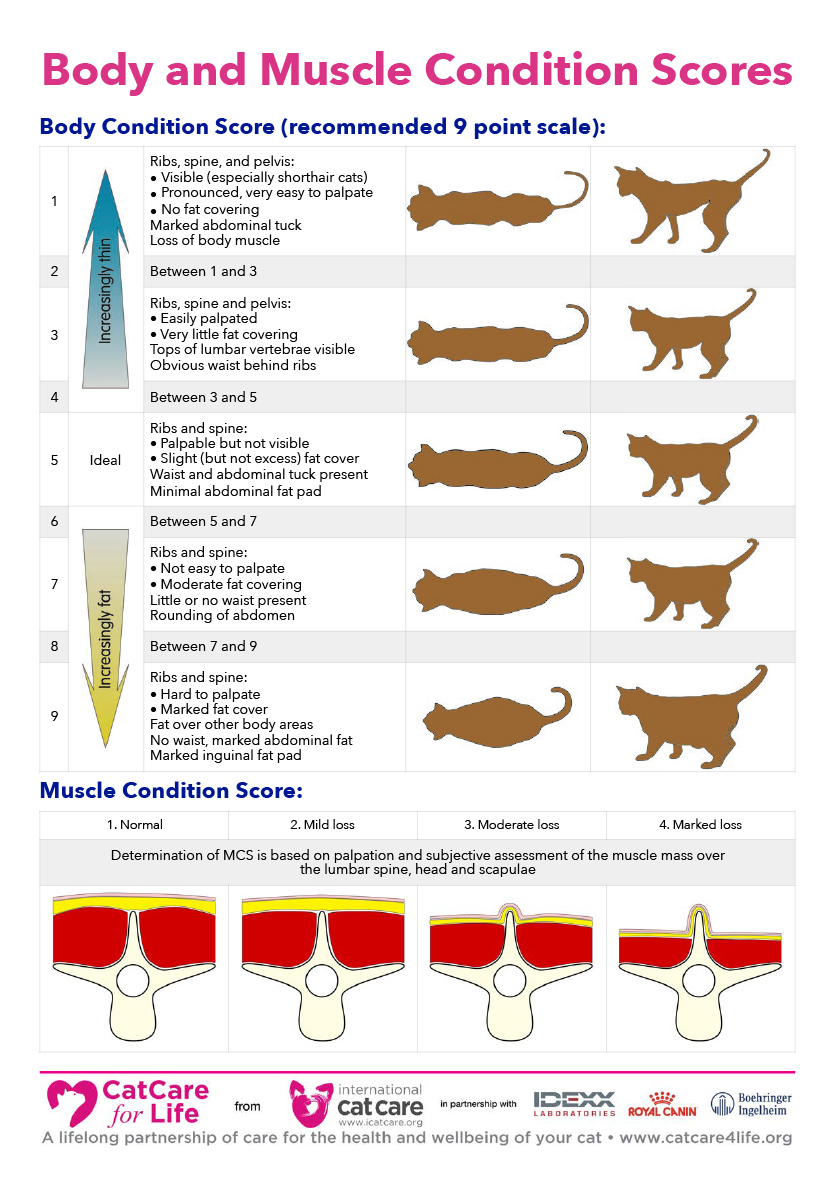
When dealing with obesity in cats, prevention is always better than cure.
While helping an obese cat lose weight is possible, it’s better to ensure you are providing them with the right amount of food and plenty of mental and physical stimulation from the start in order to help maintain their ideal body weight. Give your cat opportunities to play, climb and explore etc. as well as providing their food in ways that are healthy and work instinctively for them and they should naturally maintain a healthy weight.
To find out more about how to enrich your cat’s environment, both inside and out, take a look at our advice on How to make your outside space cat friendly and How to make your home cat friendly and enriching.
Helping an obese cat lose weight
As with humans, it’s not healthy for cats to ‘crash diet’ and lose weight too quickly, as it can lead to further medical problems.
Always consult a vet if you think your cat may be obese, or you have concerns about your cat’s weight or diet. Your vet will develop a personalised programme for your cat that combines suitable feeding, advice about how to encourage your cat to exercise more and also how to monitor the plan with care.
It can often be hard to see weight loss or gain when you see your cat daily so it’s important to check in with your vet regularly for weigh-ins to track progress. You can also do this yourself at home using your scales. Try and encourage your cat to get on themselves using a toy so you don’t need to pick them up. Weighing your cat regularly will help to ensure that your cat isn’t losing weight too rapidly. For severely overweight cats, it may take up to a year to reach their ideal body weight.
What to feed an obese cat
Cats are carnivores and, unlike humans and dogs, must have meat in their diet to survive and be healthy. A cat’s natural diet would consist of small prey mammals and would be high in protein with some fat and carbohydrate. Your vet will be able to advise on the best diet for your cat, whether they are overweight or not. They will also be able to advise on the best diets for cats of different ages and life stages. Unless your vet specifically advises it, you should not feed your cat any vitamins or supplements.
If you need to change your cat’s food, you can do this by mixing a very small amount of new food in with the normal food and build this up over time. Doing it in this way will help prevent stomach upsets. If your cat is on a prescription diet, or even if they’re not, if you’re thinking about making any major changes to your cat’s diet, you should always do this with the advice of your vet.
Always ensure you feed your cat a ‘complete diet’. Some foods are referred to as ‘complementary’ which means they do not provide your cat with all the nutrients they need. Generally, it’s a good idea to offer your cat both wet and dry food. This should help to keep their teeth in better condition, and ensure they get moisture in their diet. Cats will tend to graze at food throughout the day, so giving them constant access to a measured daily amount of dry food is ideal, with wet food given once or twice a day. It’s best not to feed cats any human food, as some of it is toxic to cats.
In terms of the amount, feeding guidelines are provided on all packets of cat food. Having your cat weighed regularly during health checks at the vet will help ensure your cat is being fed appropriately.
If you like to give your cat treats you can set aside some of their allocated daily dry food and offer that as treats. If you would prefer to give your cat other treats, then make sure you account for these in the amount of wet and dry food you’re giving them. If your cat is on a weight loss programme, treat your cat in other ways such as through increased play or more time spent with you.
Exercise for an obese cat
In addition to a suitable diet, cats can be encouraged to exercise more through increasing the amount you play with them and encouraging them to move around the home and outside. You can do this with scatter feeding, by hiding dry food around the house for your cat to forage, using puzzle feeders, providing cat trees and shelves for climbing, spending time with your cat in your outside space or garden etc. Play and exercise are important to help your cat to maintain a healthy body weight.
MANAGING AN OBESE CAT’S WEIGHT IN A HOUSE WITH MULTIPLE CATS
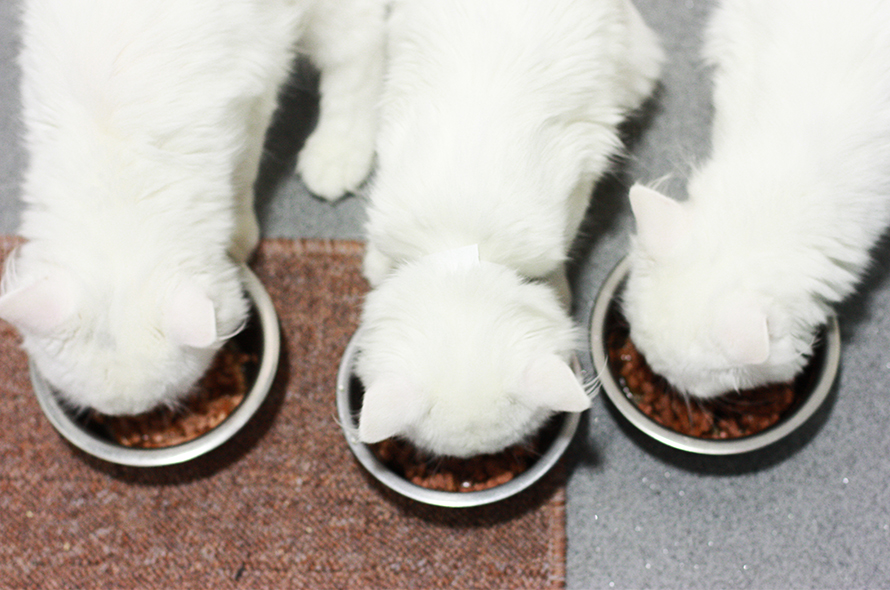
It can be more challenging to manage an obese cat’s diet in a household with more than one cat. The presence of another cat can sometimes be a factor in a cat gaining weight as some cats will be happy to finish off any food left over by another cat. Some cats can also become stressed by living with other cats, which can cause them to overeat. They may also lose weight when stressed, so it’s a good idea to keep an eye on things and get advice from your vet if you think there may be an issue.
Feeding your cats in separate rooms will help, as well as picking up any left-over food. You could also consider using microchip-controlled feeders to ensure that your cats are only able to access the food intended for them.
